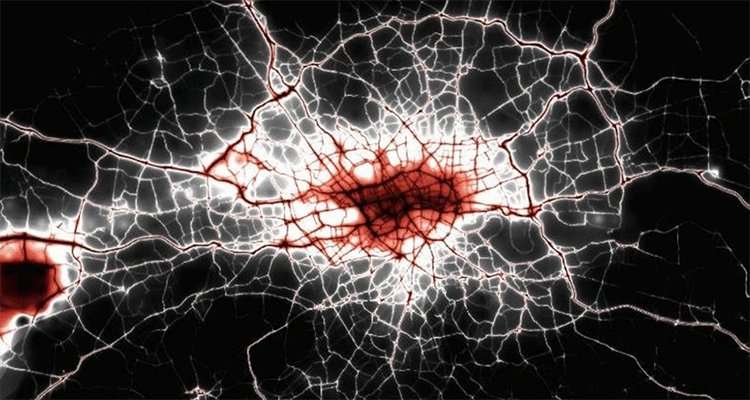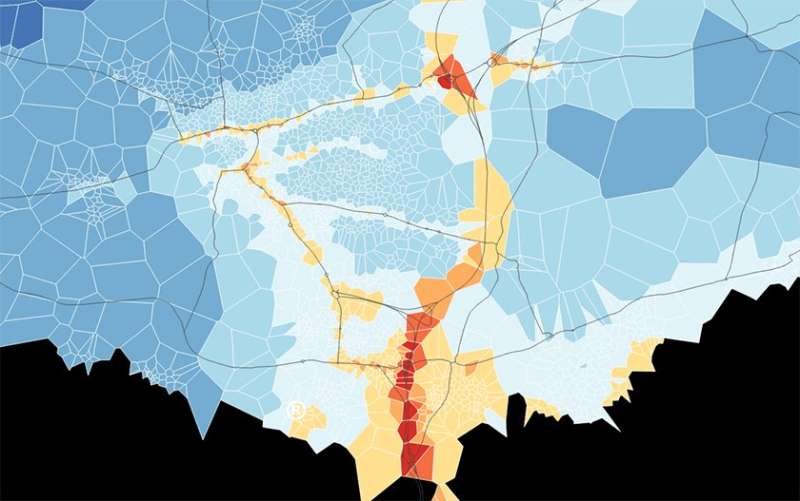New technology models cities' air quality in under 10 minutes

Dr. Nicola Masey has found that a new system can accurately model air quality in large cities like London in minutes, within five metres of any given location using just a standard office computer.
Air pollution monitors are stationed in cities and towns across the UK, but they only report pollution once it has happened. That means they can't predict when air quality might change. Also, they only monitor a specific location, while air quality can vary substantially over small areas.
The new RapidAir software, developed by a company called Ricardo, can predict what air quality will be depending on various factors. To find out if it was accurate, Nicola looked at historic pollution records from 86 sites across London and compared them to estimates from RapidAir. The software's results matched records, showing that it was a good predictor.
Nicola said: "We want to build on the air quality monitoring systems that are in place across the UK, particularly in large cities, and enhance the information available to the public and policymakers.
"The usefulness of monitoring has been limited by the fact that it only measures air quality in specific spots, when air quality can change dramatically in just a few metres. In streets surrounded by tall buildings, for example, air pollution can become trapped, especially if the wind is blowing from a direction perpendicular to the street.
"While we measured nitrogen oxide in our study, we can run the system for any pollutants for which emissions are known. My NERC studentship offered Ricardo a good opportunity to have model testing and validation carried out independently, which really benefited the company in establishing provenance for their RapidAir system."

Her research, which ran in parallel to the development of the RapidAir model by Ricardo, investigated the use of well-known mathematical equations to simulate the concentration of pollutions on built-up roads—sometimes called 'street canyons'. She compared these with concentrations estimated with another method that estimates how densely built-up an area is.
For example, urban designers often look at things such as the amount of sky that can be seen, hill shade and wind effect to assess warmth and shade, but until now these factors have not been widely used in air pollution studies.
NERC Associate Director, Operations & Research Careers, Robyn Thomas said: "Air pollution is a pressing issue in the UK and internationally. We fund high-quality scientific research and innovation to advance our understanding of the sources and impacts of poor air quality, including funding researchers working with industry, business and government. As part of her NERC CASE studentship, Dr. Masey's work with Ricardo will help cities and people plan their air pollution exposure to minimise risks to health."
Dr. Scott Hamilton, Technical Lead in Air Quality Modelling at Ricardo Energy & Environment, said: "As well as giving policymakers a detailed, city-wide air quality climate in minutes, RapidAir runs 'what if' scenarios to determine the impact of policies or infrastructure changes such as new roads or priority bus routes.
"The system relies on air quality data that is generally already available, so it can be used in any city in any part of the world, as long as there is local measurement data, details of traffic flows and compositions and building data available for us to use with the model.
"It was great to have Nicola on board with us to help test the model and produce quality research articles in the later stages of RapidAir's development. Nicola joined the RapidAir development team here at Ricardo after her Ph.D., which speaks volumes about the value we got from the project."
Provided by PlanetEarth Online
This story is republished courtesy of Planet Earth online, a free, companion website to the award-winning magazine Planet Earth published and funded by the Natural Environment Research Council (NERC).

















